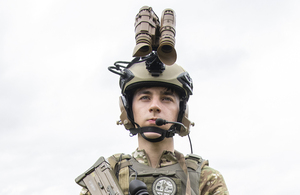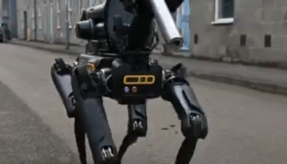
The next generation of body-worn technology has been put through its paces by British soldiers, bringing a modernised advantage to the battlefield. The aim of the trials is to integrate available technology into wearable tech for soldiers, advancing battlefield awareness and allowing faster tactical decision making.
This announcement comes as part of the new government’s commitment to procuring state-of-the-art defence capabilities. The Future Soldier programme delivers on the aim of adapting military equipment programmes to meet emerging requirements, as outlined in the launch of the Strategic Defence Review this week.
Examples of the technologies being looked at by the Army include laser detection systems to warn if enemies are targeting personnel, drone thermal detection to identify enemies, and ground sensors to detect enemy movement with alerts sent to body-worn systems.
The digital system is standardised and provides customised control that can be tailored to each individual mission.
Troops from Leicestershire-based 2nd Battalion, The Royal Anglian Regiment, tested cutting-edge data visualisation tools, integrated sensors, and live intelligence feeds all connected in a single system.
The trial, conducted by scientists from the Defence Science and Technology Laboratory (Dstl), demonstrates that even minor changes to infantry-level tactics with Command and Control, Communications, Computing and Information Systems, can vastly improve operational outcomes.
Improved outcomes can include:
- Increasing the tempo of a battle – outthinking the enemy by creating a faster understand, decide, act loop.
- Increase situational awareness meaning better informed decision making based on real-time local operating picture of where friendly and enemy forces are, as well as other assets are on the battlefield.
- Enhanced decision making – the ability to send data, such as images and full motion video, from the soldier to wider teams.
Minster for Defence Procurement and Industry, Maria Eagle said: “This government is clear in our commitment to advancing technology that ensures the safety and superiority of UK Armed Forces. This cutting-edge technology will bolster operational lethality and elevate battlefield awareness.
“I welcome the continued collaboration between government, industry, and scientists on this innovative programme.”
Dstl scientists are carrying out this research as part of the Future Integrated Dismounted Soldier Vision (FIDSV) with research into how the next generation of ‘digitally connected soldier’ technology can improve capability and operational advantage.
The range of technologies tested includes:
- A helmet mounted strobe alert system to identify friend or foe.
- An electronic system that emits an identifiable beacon when it detects an incoming laser.
- Laser detection system to warn if enemies are targeting personnel.
- A system that detects the wavelengths of incoming lasers and warns the user.
- On person drone control which gives the user the ability to control and pre-programme drones.
- Drone thermal detection to aid enemy detection.
- Laser range finder – a device on the weapon that calculates the range of an object/target.
- Advanced digital day and night optics for weapons, powered via the weapons’ Picatinny rail.
- Smart hub – the ‘brain’ of the integrated power and data supply for all digital devices.
- Mesh network – a type of radio configuration that permits “hopping” from one soldier’s radio to another to enhance range.
- Ground sensors to detect movement with alerts sent to body-worn systems.
Dstl chief executive Dr Paul Hollinshead OBE MBA said: “Dstl is working closely with industry to develop and integrate technologies that will transform our armed forces, making them more capable and lethal.
“Building on our decades of expertise, this work is delivering mission success, protecting the nation and helping it prosper.”
Jon Russell, Dstl’s Senior Principal Scientist on the research, said: “This technology will protect the lives of our Armed Forces by improving operational capability by giving them the advantage over the enemy.
“It is great to see the Future Integrated Dismounted Soldier Vision is clearly proving how a soldier system containing multiple knowledge capabilities that are designed to combine crucial data to improve operational advantage.
“Our aim is to develop the most capable armed forces in the world, by merging different technologies to advance battlefield awareness.”
Regimental Sergeant Major (RSM) at the infantry Trials and Development Unit said: “The trial, led by Dstl, was a showcase of future technologies and digital integration. The research has now advanced, bringing together industry to enhance capabilities with Command, Control, Communications, Computing and Information Systems.
“As the Army’s lead in dismounted close combat trials and development, we are at the forefront of improving operational advantage and look forward to supporting its future development.”
Dstl, in partnership with industry, will make use of the lessons learned from this latest testing on Salisbury Plain’s military training area to develop the need for future equipment for defence.
The next phase will include vehicle mounted options, as well as develop a joint soldier system with UK allies. Further development and experimentation will continue over the next five years and will evolve as and when new technologies become available.
If you would like to join our community and read more articles like this then please click here








